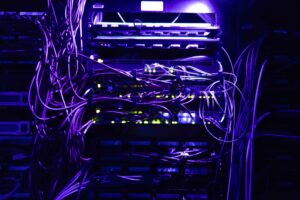Teen Earns $250K by Utilizing AI to Identify 1.5 Million Concealed Objects in Space

Teen Discovers Hidden Space Objects Using AI
Background of the Discovery
A remarkable achievement was made by a teenager who successfully used artificial intelligence (AI) to identify an astonishing 1.5 million previously hidden objects in space. This unprecedented discovery not only showcases the immense potential of AI in scientific research but also emphasizes the capabilities of young minds in contributing to advancements in astronomy.
The Power of AI in Astronomy
Artificial intelligence has revolutionized numerous fields, including healthcare, finance, and education. In astronomy, it is particularly beneficial for analyzing large datasets generated by telescopes. Traditional methods of data analysis can be time-consuming and labor-intensive. However, AI algorithms can quickly sift through vast amounts of information, identifying patterns and features that may go unnoticed by human researchers.
Benefits of AI in Astronomy
- Speed: AI processes data much faster than human analysts.
- Accuracy: Machine learning algorithms can reduce the chances of human error in data interpretation.
- Scalability: As telescopes generate more data, AI can handle these increasing volumes effectively.
- Discoveries: AI can reveal new celestial objects, potentially changing our understanding of the universe.
The Teen’s Project
The teenager, whose name has not been disclosed, developed a project that harnessed the power of AI to comb through astronomical data. By utilizing machine learning techniques, the teen was able to detect 1.5 million hidden celestial objects that had previously gone unnoticed. This project not only won the teen recognition but also a substantial prize of $250,000.
Technologies Used
- Machine Learning Algorithms: These algorithms help in detecting patterns within the data.
- Neural Networks: A type of machine learning inspired by the human brain, allowing for complex data processing.
- Data Visualization Tools: These tools help to illustrate the findings in a way that is accessible to both scientists and the public.
The Implications of the Discovery
This discovery has significant implications for the field of astronomy. Identifying these hidden objects could lead to a better understanding of their characteristics and orbits. This knowledge can help scientists learn more about the origin and evolution of the universe.
Potential Research Areas
- Understanding Dark Matter: Some of the detected objects could provide insights into dark matter, an elusive component of the universe.
- Exoplanet Research: The identification of new celestial bodies can aid in locating planets outside our solar system, increasing the chances of finding habitable environments.
- Asteroid Tracking: Enhancing our ability to track asteroids can be crucial for planetary defense initiatives.
Future of AI in Astronomy
With the success of this teen’s project, the role of AI in astronomy is expected to grow. More young researchers may be inspired to pursue careers in STEM (Science, Technology, Engineering, and Mathematics) fields, utilizing cutting-edge technologies to make their own contributions.
Encouraging Young Innovators
Programs and competitions aimed at young scientists and innovators can foster interest in scientific fields. Initiatives that provide access to technology and resources can empower aspiring researchers to explore complex problems and perhaps replicate this teenager’s success.
In summary, the teenager’s use of AI to discover millions of hidden objects in space demonstrates the significance of merging technology with scientific inquiry. This accomplishment not only highlights the capabilities of young minds but also opens new avenues for research and understanding in the vast universe.






